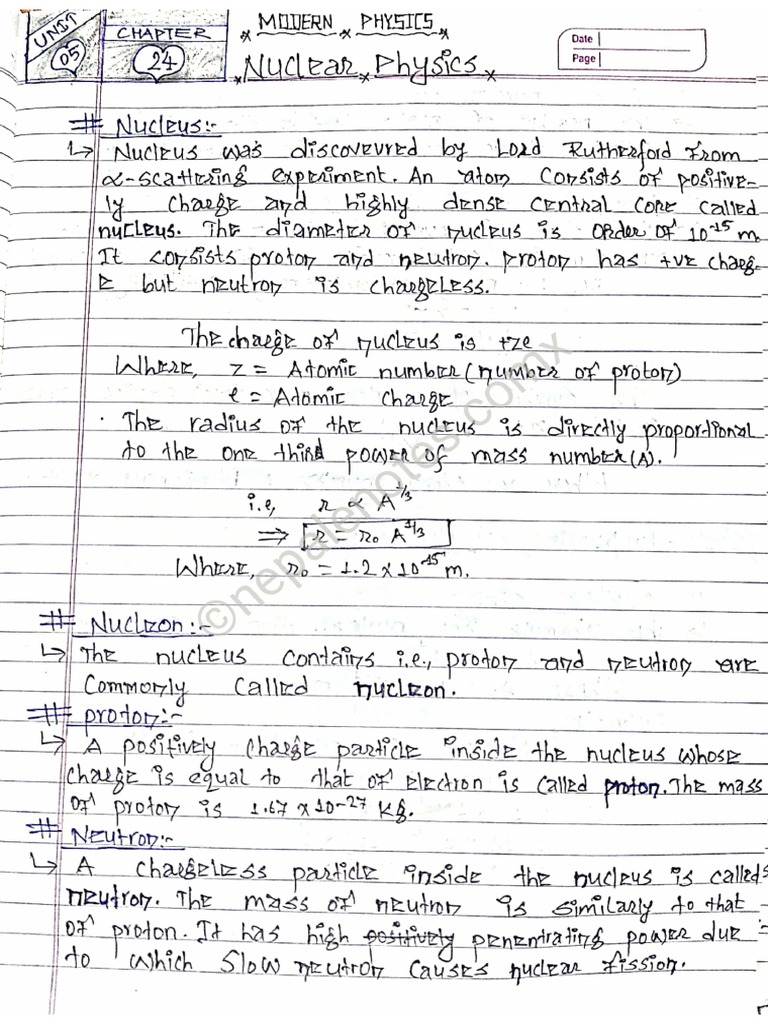How many times have you gazed at the stars and wondered about the inner workings of the universe? Or perhaps you’ve been captivated by the destructive yet awe-inspiring power of nuclear energy? These musings often beckon inquisitive minds towards the multifaceted domain of nuclear physics. As you embark on this intellectual odyssey, the question arises: what’s the best way to teach oneself nuclear physics? The journey is fraught with complexities, yet it holds the promise of profound enlightenment.
To effectively navigate the intricacies of nuclear physics, it is crucial first to establish a sturdy foundation in the essential principles of physics and mathematics. A solid understanding of classical mechanics, electromagnetism, and thermodynamics will facilitate your grasp of more advanced concepts within nuclear physics. For instance, familiarize yourself with Newtonian laws, Maxwell’s equations, and the laws of thermodynamics. These are not just abstract concepts; they form the bedrock upon which nuclear physics is built.
Next, immerse yourself in mathematical techniques, particularly calculus and linear algebra. Understanding differential equations will empower you to solve complex problems, while linear algebra provides tools that are indispensable in quantum mechanics, a crucial facet of nuclear physics. If you confront challenges with these mathematical frameworks, consider using online resources or textbooks designed for self-study. Engage with interactive platforms that offer problems to solve, and don’t hesitate to reach out to communities or forums for clarification and support.
After securing your foundational knowledge, turn your attention to the exponential literature available on nuclear physics. Start with introductory texts that guide you through the fundamental aspects of the subject. Diligently read well-regarded textbooks such as “Introductory Nuclear Physics” by David Halliday and Robert Resnick or “Concepts of Nuclear Physics” by Edington. These works build the conceptual framework while addressing real-world applications. Be sure to take notes and distill core concepts, as this synthesis will aid in retention.
As you delve deeper, consider the value of multimedia resources. Online courses offered by reputable institutions can provide structured learning paths and expose you to influential thinkers in the field. Platforms like Coursera or edX often provide access to lectures from esteemed professors and interactive assignments designed to consolidate your learning. These programs often encourage participatory engagement with fellow learners, thus fostering a collaborative learning environment.
However, merely consuming this material is insufficient. Genuine understanding comes from applying the concepts you have learned. Problem-solving is the crucible in which theoretical knowledge is transformed into practical wisdom. Engage with the exercises presented in your textbooks, and seek out additional problems from online platforms or study groups. Consider exploring simulations that visualize nuclear reactions or particle interactions. Tools like PhET Interactive Simulations can vividly illustrate principles like radioactive decay, nuclear fission, and fusion. By observing these phenomena visually and mathematically, you can solidify your comprehension.
While pursuing this remarkable endeavor, it is prudent to establish a personal study schedule. The complexity and scope of nuclear physics demand consistent engagement. Dedicate specific times of the week to your studies, blending theoretical readings with problem-solving and simulations. Set quantifiable goals, whether that means grasping specific chapters within a particular timeframe or mastering a series of problems. This structured approach cultivates discipline and momentum, akin to the orbits of subatomic particles revolving around a nucleus.
Active involvement in scientific communities can also be immensely beneficial. Participate in local physics clubs, attend lectures, or engage in forums dedicated to physics discussions. Engaging with like-minded individuals stimulates intellectual curiosity and provides opportunities to clarify misunderstandings. Such interactions often enhance motivation and spark new avenues of inquiry. Look for interest groups in social media platforms, where complex questions can fuel stimulating discourse.
As you progress, consider delving into research articles and journals that illuminate current advancements in the field of nuclear physics. Platforms like arXiv offer pre-publication research that provides insights into contemporary studies and trends. Engaging with current literature cultivates a broader understanding of the field’s trajectory and highlights potent questions still awaiting resolution. Exploring these inquiries can invigorate your passion and inspire further study.
It is crucial, however, to not shy away from the challenges that accompany self-directed learning. Nuclear physics can be daunting, and periods of frustration may arise. Embrace these obstacles as opportunities for growth. When faced with a particularly intricate concept or problem, take a step back, reassess, and enlist the help of tutoring resources or forum discussions. Attaining mastery often requires grappling with adversity; thus, persistence proves paramount in navigating the exhilarating labyrinth of nuclear physics.
Ultimately, the synthesis of foundational knowledge, resourceful exploration, collaborative engagement, and resilient determination will equip you on this journey of self-education in nuclear physics. As you venture forth, remember to relish in the process of discovery. With the universe as your laboratory and imagination as your guide, the mysteries of nuclear physics await your exploration. To engage in this field of study is to delve into the very fabric of existence, forging connections between the minutiae of atomic interactions and the grandeur of cosmic phenomena. So, are you ready to unravel these enigmas and perhaps make your own discoveries in the world of nuclear physics?












